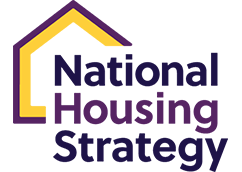First-Time Home Buyer Incentive
This program helped to make homeownership more affordable for qualifying buyers.
IMPORTANT
The First-Time Home Buyer Incentive is no longer accepting applications. No new approvals will be granted after March 31, 2024.
The deadline for new submissions for the First-Time Home Buyer Incentive was March 21, 2024, midnight EST.
For approved applications
The Program Administrator will continue to consider post-approval changes, following the guidance outlined in the Operational Policy Manual (PDF). Please refer to section 6.3.
For inquiries: [email protected]
The First-Time Home Buyer Incentive helped people across Canada purchase their first home. The program offered 5 or 10% of the home’s purchase price to put toward a down payment.
WHAT WAS THE INCENTIVE?
The First-Time Home Buyer Incentive made it easier for qualifying homebuyers to buy a home and lower their monthly mortgage payments. Just as the name implies, this incentive was for first-time homebuyers.
This program was a shared equity instrument. It worked by getting an extra 5% or 10% of the down payment of the home and then repaying the government either 5% or 10% of the property’s market value at the time of repayment, up to a maximum repayment amount equal to:
- In the case of appreciation, the Incentive amount plus a maximum gain to the government of 8% per year (not compounded) on the Incentive amount from the date of advance to the time of repayment.
- in the case of a depreciation, the Incentive amount minus a maximum loss to the Government of 8% per year (not compounded) on the Incentive amount from the date of advance to the time of repayment.
A first-time homebuyer must have met at least one of the following criteria:
- never purchased a home before
- did not occupy a home that the buyer or their current spouse or common-law partner owned in the last 4 years
- recently experienced the breakdown of a marriage or common-law partnership
ELIGIBILITY CRITERIA
There were a few criteria to determine eligibility for the First-Time Home Buyer Incentive:
- total annual qualifying income didn’t exceed $120,000 ($150,000 if the home purchased was in Toronto, Vancouver or Victoria)
- total borrowing, meaning the amount of the mortgage plus the amount provided by the program, was no more than 4 times the qualifying income (4.5 times if the home was in Toronto, Vancouver or Victoria)
- the buyer or their partner was a first-time homebuyer
- the buyer was a Canadian citizen, permanent resident or non-permanent resident authorized to work in Canada
- the buyer met the minimum down payment requirements with traditional funds (savings, withdrawal/collapse of a Registered Retirement Savings Plan (RRSP) or a non-repayable financial gift from a relative/immediate family member)
The Incentive was like a second mortgage on the home. The first mortgage had to be greater than 80% of the value of the property and was subject to a mortgage loan insurance premium. It also had to be eligible through Canada Guaranty, CMHC or Sagen.
The insurance premium was based on the loan-to-value ratio of the first mortgage only. That is, the first mortgage amount divided by the purchase price. Buyers didn’t pay mortgage insurance on the incentive — it was included with the total down payment.
Other details you need to know
There may have been additional costs associated with the Incentive:
- Additional legal fees: Your lawyer is closing 2 mortgages so you may be charged higher fees.
- Appraisal fees: To repay your incentive, you may need to have an appraisal done to determine the fair market value of your home.
- Other fees: Additional fees may be incurred throughout the life cycle of the incentive, like switching your first mortgage to a new lender or refinancing your first mortgage.
- Property Insurance premiums: Additional costs may be incurred to account for an additional mortgage registered on the property. Talk to your insurance broker or insurance provider to find out more details.
HOW DO I REPAY THE INCENTIVE?
Repayment Details
The Incentive must be paid in full — that is no partial payment — after 25 years or when the home is sold. There are a few ways where changes to the Incentive can trigger repayment:
- You go through a breakup and you want to buy out the co-borrower. If this requires additional insured funds, you must pay back the Incentive in full.
- Porting your mortgage will trigger a repayment of the Incentive.
- A partial release of security is considered a sale and will trigger repayment of the Incentive.
Use these informational pieces to understand more about the Incentive
- Repayment Document (PDF): A step-by-step process along with key information.
- Appraisal Document (PDF): Appraisal checklist to be provided to the appraiser in the case of a voluntary repayment or at the 25-year mark.
- Operational Policy Manual (PDF)
- Questions & Answers (PDF)
Borrowers should discuss with their lender if repayment of the Incentive is required under certain refinancing situations.
For general inquiries or technical support please contact us
Phone: 1-800-668-2642 (Business hours: 8 a.m. to 7 p.m. Eastern Time, Monday to Friday)
Email: [email protected]

